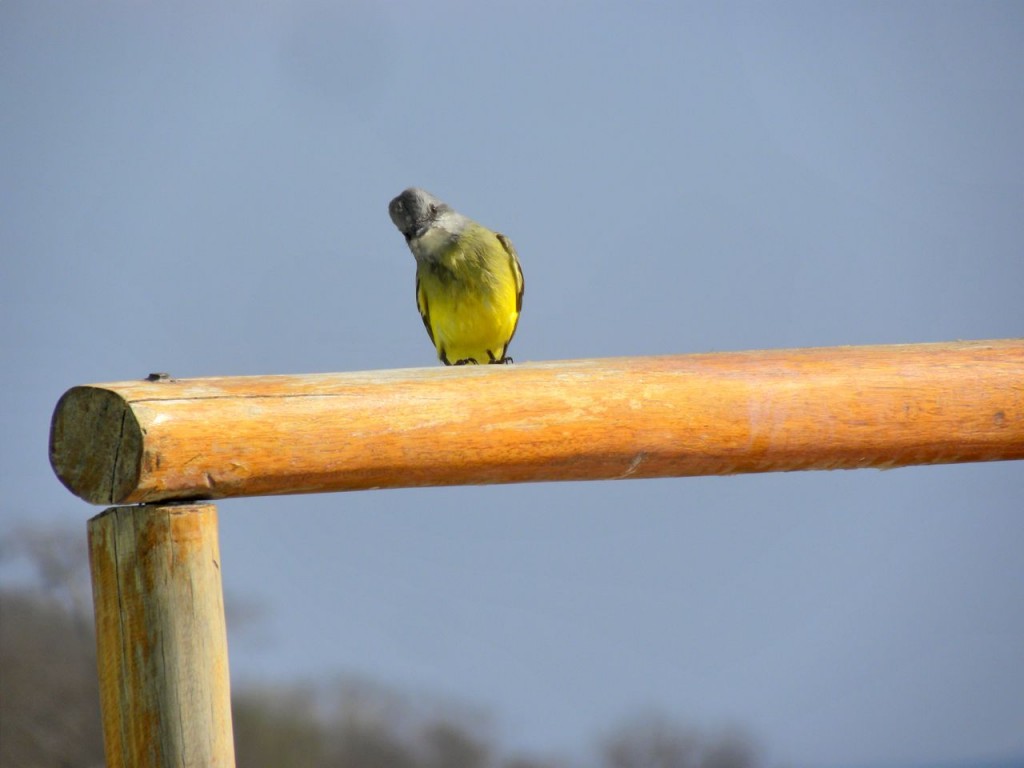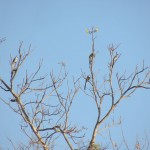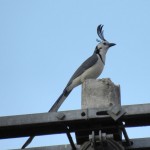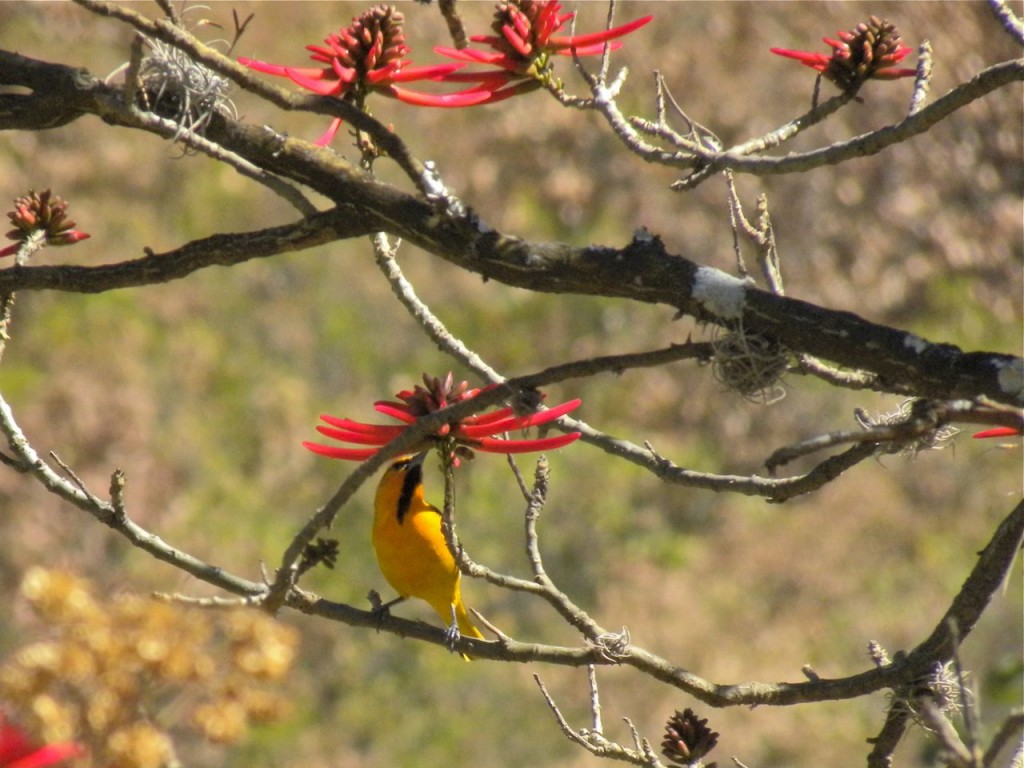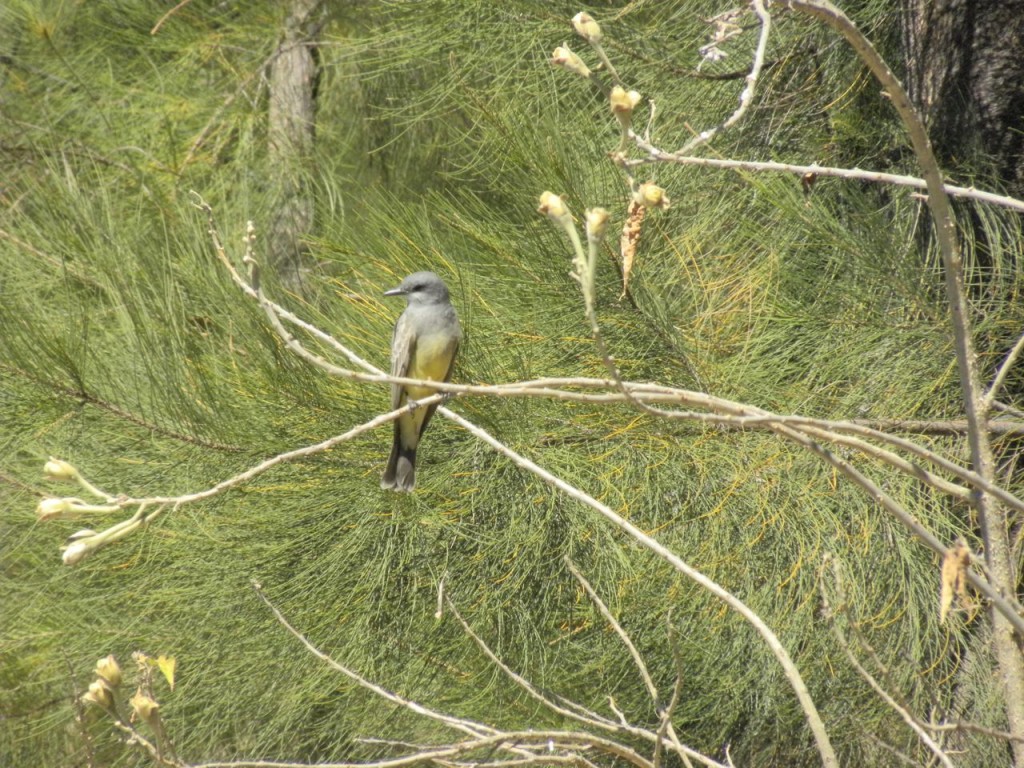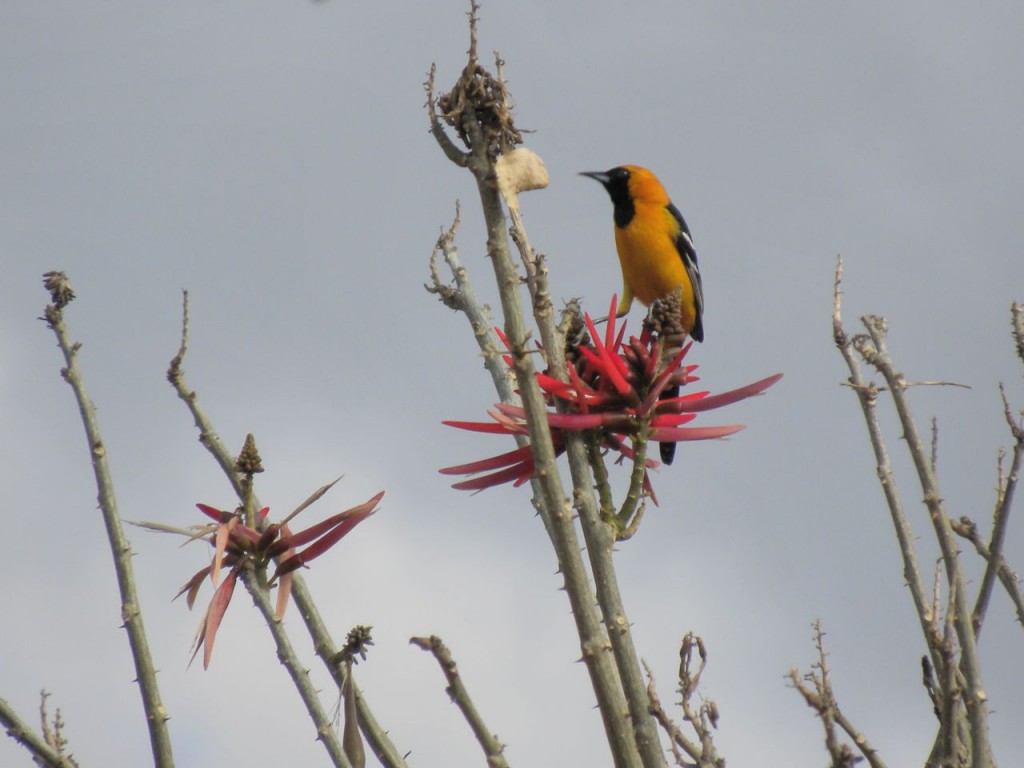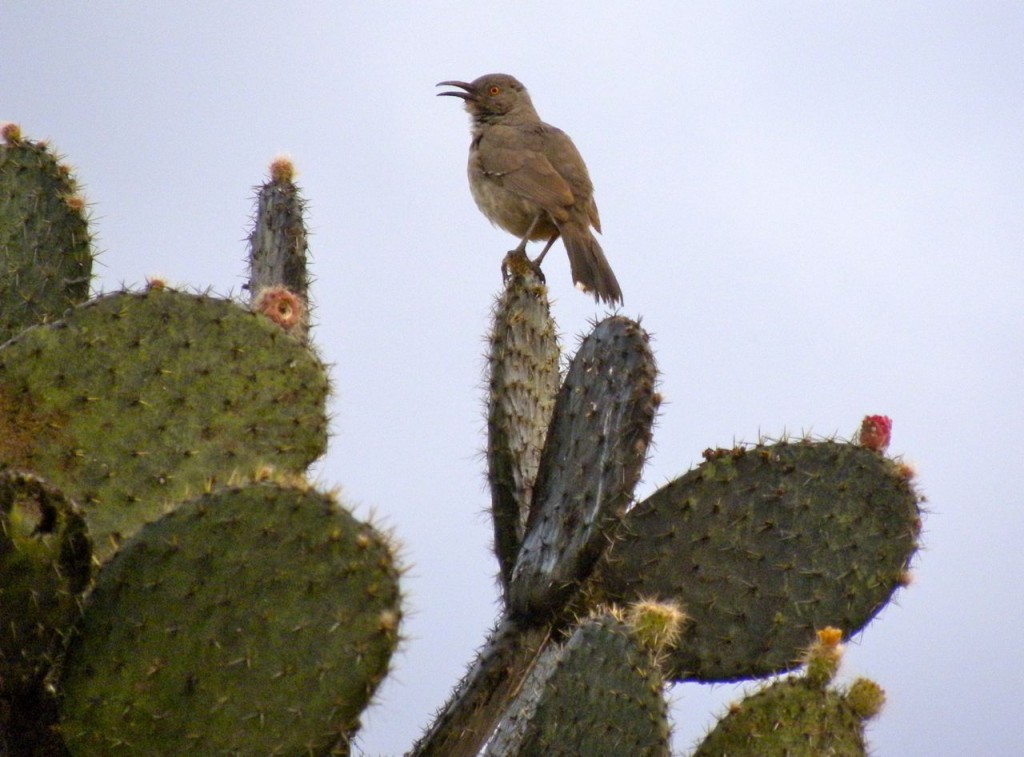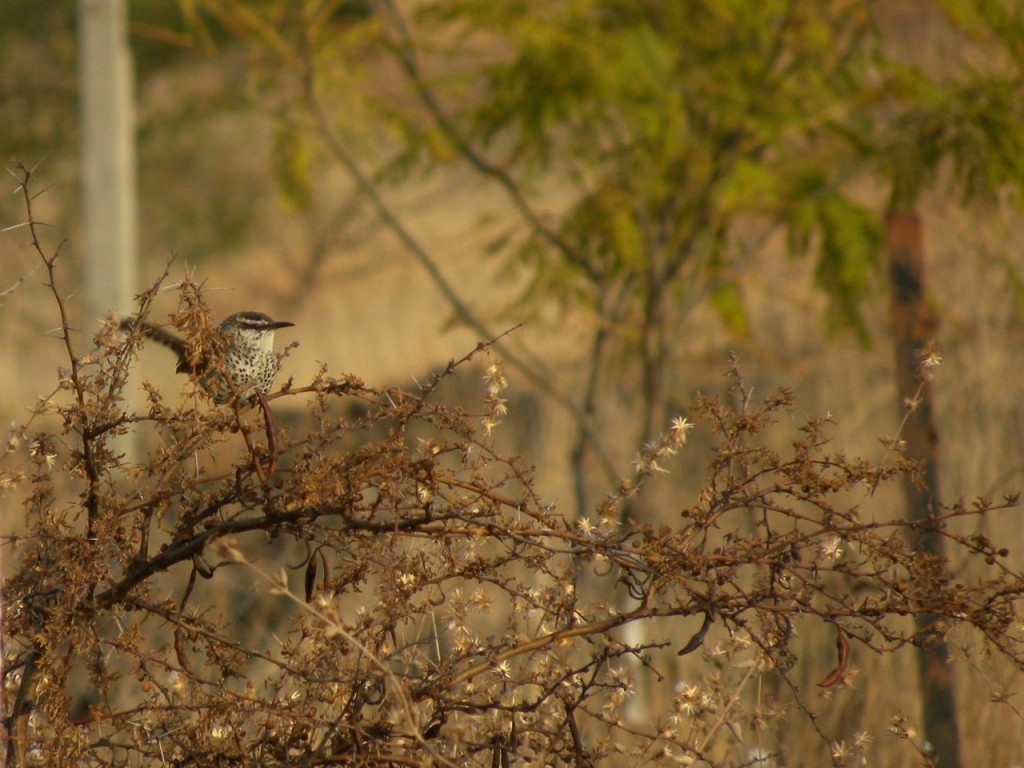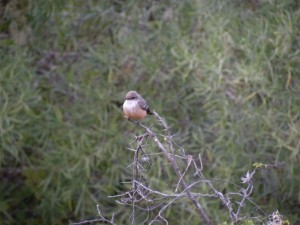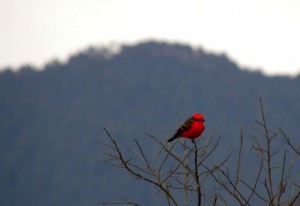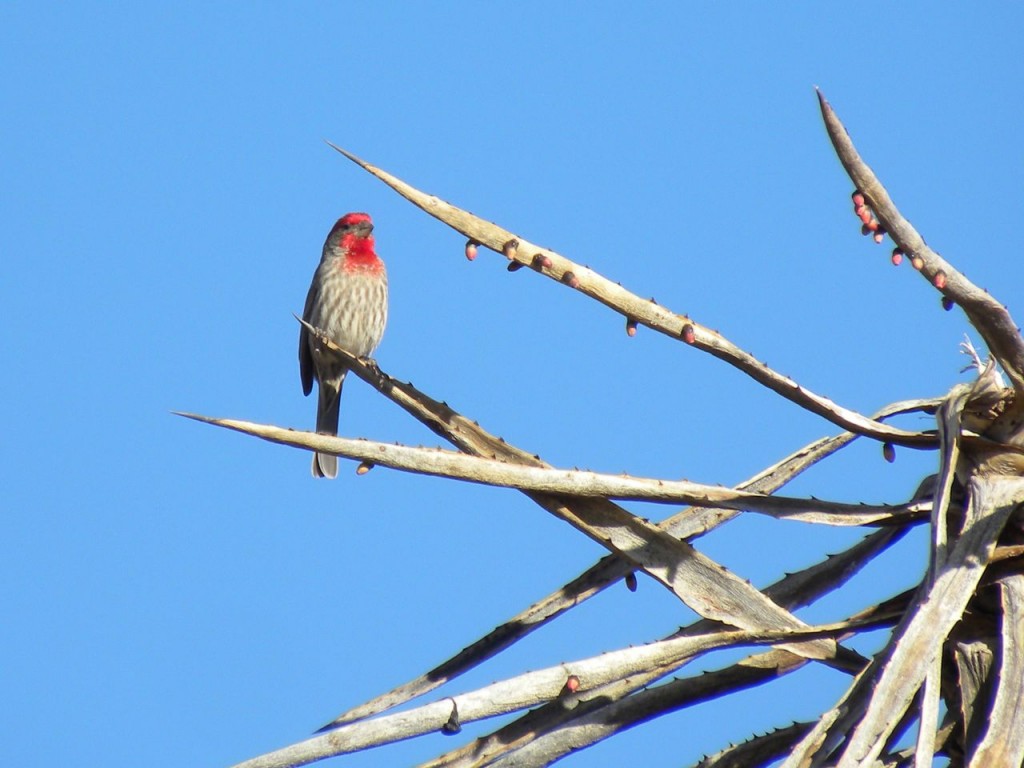28 January 2013. We’ve returned to the steamy Pacific coast to wrap up this very enriching holiday. Getting from the City of Oaxaca to La Crucecita (the non-resort settlement part of Huatulco) was an epic event, 6 hours on a small bus, climbing and circling mountainsides, twisting and lurching as we went. It’s hard to get a good look at birds on a bus trip and I soon gave up trying.
But back here, on the coast where the daytime temperatures are the stuff of all-inclusive gated resorts, there’s plenty to see. I left our hotel room early, just as it was getting light, and headed away from the main streets.
The hillsides adjacent to La Crucecita are forested, dry, scrubby and tangled habitat. A happy place for many birds with plenty of cover and food. From a quiet roadside I stood and watched for a couple of hours as all shapes and sizes of birds came and went. Among the most notable were several White-throated Magpie Jays floating from treetops to streetlamps and back. I can only think they were finding scorched and ready to eat moths that had been drawn to the light. Whatever the reason they seemed to spend a lot of energy exploring for something. Magpie Jays are a compelling and entertaining parody of all that’s best in Blue Jays and Magpies, they command wherever they chose to alight, they fly with a floating lightness and in flight they call to each other with something between a screech and a growl. I managed to get several pictures including one of a tree-full of them.
Orchard Orioles in flocks wandered around in waves. it took me quite a while to realize what I was looking at, they moved so quickly, and a few Bullock’s Orioles joined them just to confuse the issue.
I puzzled over a small brightly coloured bird skulking low through some scrub, I took a couple of photos to help me identify it later and made a detailed mental note of its plumage and mannerisms. After breakfast I was able to conclude that it was a female Orange-breasted Bunting; quite beautiful. I’d seen one a week or so ago near Tehuantepc, but then only fleetingly, so todays was a bonus.
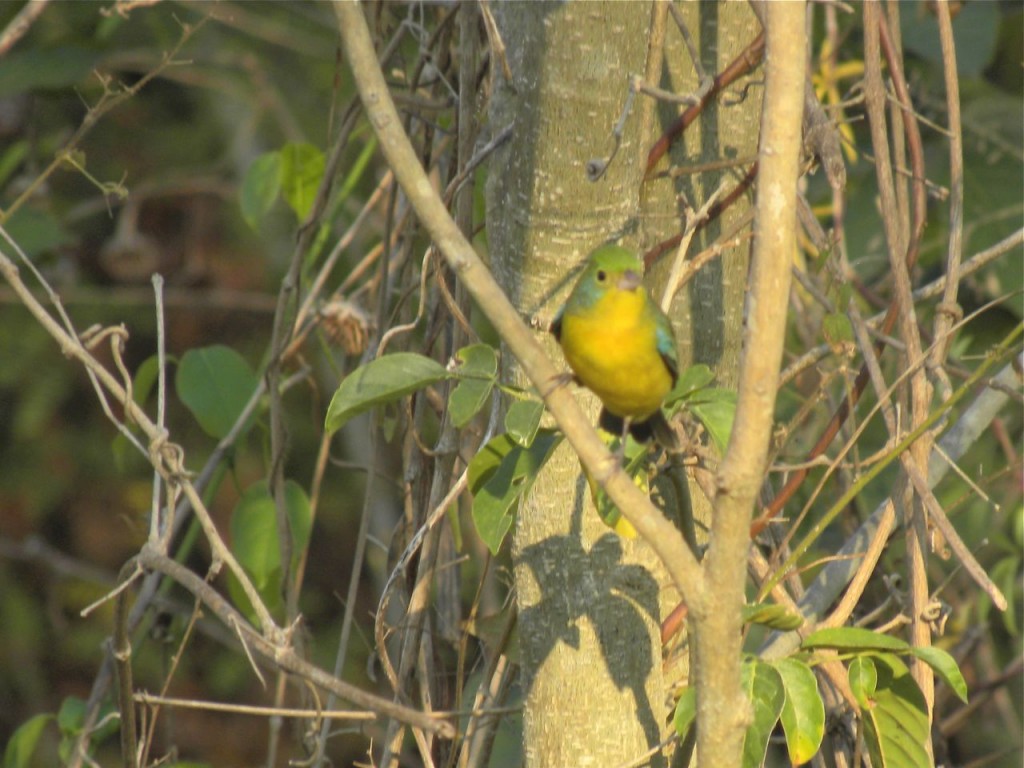
There were many more interesting sightings including a pair or White-fronted Parrots, several chattering Banded Wrens and some Golden-fronted Woodpeckers. But the Birds of the Day was a pair of breathtaking Pale-billed Woodpeckers. Looking much like our familiar Pileated Woodpecker, large and business-like, these two spent just a few moments bashing at a dead tree right in front of me.
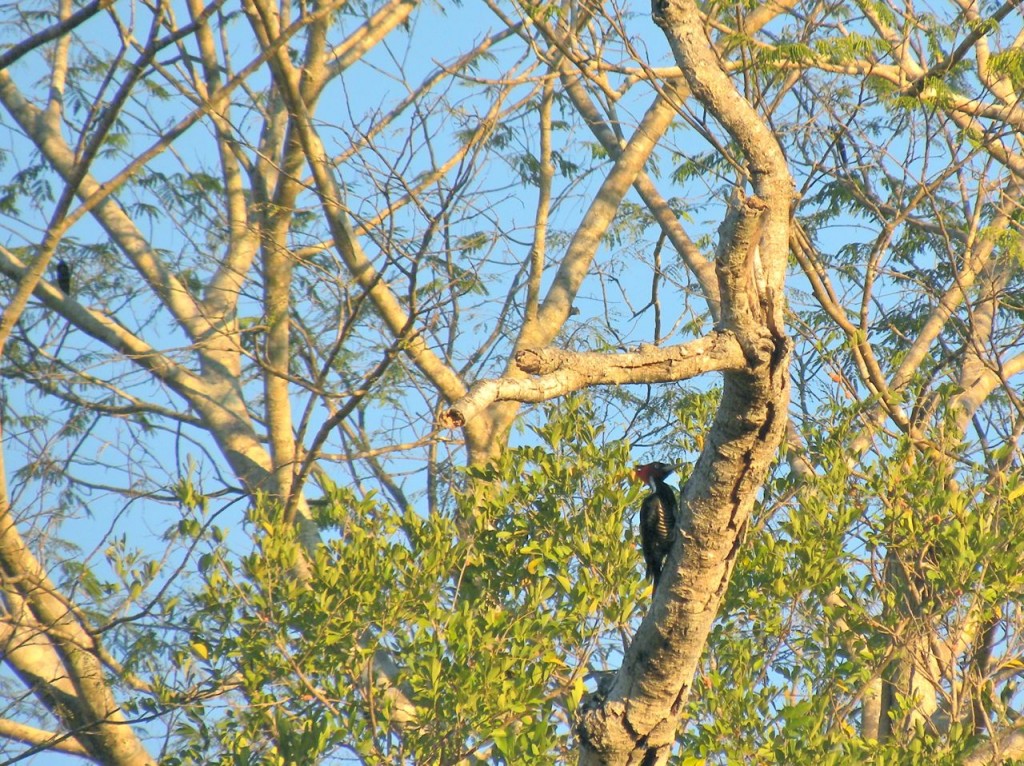
We spent the hot afternoon lazing at friends’ hotel, avoiding the searing sun. A couple of Tropical Kingbirds visited us to drink from the pool, while Magnificent Frigatebirds, Brown Pelicans and Black Vultures wheeled overhead. I suppose I could have just spent two weeks lying by a pool and still have a bird list; a dozen or so nice species anyway.
